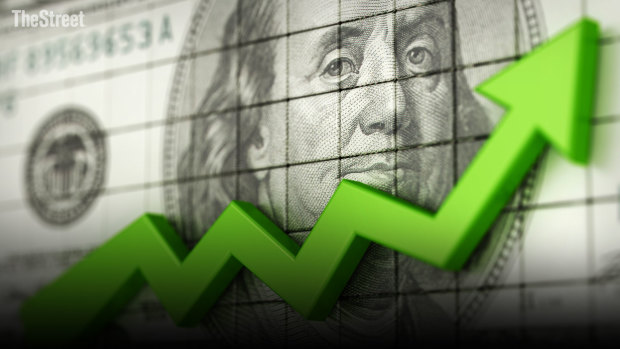
The Federal Reserve's preferred measure of U.S. inflation ticked modestly higher last month, while spending accelerated faster than forecasts as officials continue to struggle with taming price pressures in the world's largest economy.
The July core PCE Price Index rose 4.2% from last year, a modest increase from the 4.1% pace recorded in June, according to a Thursday report from the Bureau of Economic Analysis. The reading matched the consensus Wall Street forecast and was near the lowest since November of 2021.
The core index was up 0.2% on the month, the BEA reported, matching both the 0.2% in June and the Wall Street consensus forecast.
The headline PCE index rose 0.2% on the month and rose 3.3% on the year. The yearly reading was up from the 3% notched last month -- the lowest since March 2021 -- but also met analysts' estimates. The highest level of 7.1% was printed last year.
Personal incomes rose 0.2% while real personal spending was up 0.8% from June's pace, the BEA noted, a bit higher than Wall Street forecasts of a 0.7% advance. This suggests ongoing consumer strength in an economy that is growing at a 5.9% clip, according to real-time data from the Atlanta Fed.
U.S. retail sales powered 0.7% higher last month, to a collective $696.4 billion, as higher gas prices and a boost from Amazon's Prime Day event underscored the ongoing strength of the domestic consumer, the Commerce Department reported on Aug. 15.
The closely tracked control group number, which excludes autos, building materials, office suppliers, gas station sales and tobacco and feeds into the government's GDP calculations, rose 1%, firmly ahead of analysts' estimates of a 0.2% gain.
The figures will go a long way towards defining the Fed's next rate hike, either at its policy meeting in September or over the final two gatherings in November and December. Higher Fed rates often lead to follow-on increases in mortgage costs, credit card rates and more expensive auto loans.
CME Group's FedWatch indicates an 88.5% chance that the Fed will hold rates steady at between 5.25% and 5.5% when it meets on September 19 in Washington, but puts a 40.1% chance on a quarter point rate hike in November.
"The market has been rallying this year because the consumer has remained resilient, unemployment has remained low and the economy has avoided a recession (at least for the time being)," said Chris Zaccarelli, Chief Investment Officer for Independent Advisor Alliance in Charlotte, North Carolina.
"Investors still care what the Fed is going to do, but at this point given that they are either done raising rates or very close to being done raising rates, the underlying fundamentals of corporate profits are again the main focus," he added.
In month/month terms, PCE #inflation (blue) +0.2% vs. +0.2% est./prior month … core (orange) also +0.2% vs. +0.2% est./prior month pic.twitter.com/dgCP5Y8Gxu
— Liz Ann Sonders (@LizAnnSonders) August 31, 2023
U.S. stocks were higher in premarket trading immediately following the data release, with the S&P 500 marked 6 points higher in the opening minutes of trading while the Dow Jones Industrial Average gained 112 points. The tech-focused Nasdaq was up 32 points.
Benchmark 2-year Treasury note yields added 3 basis point to change hands at 4.901% following to the release, while 10-year paper was pegged at 4.116%.
- Action Alerts PLUS offers expert portfolio guidance to help you make informed investing decisions. Sign up now.







